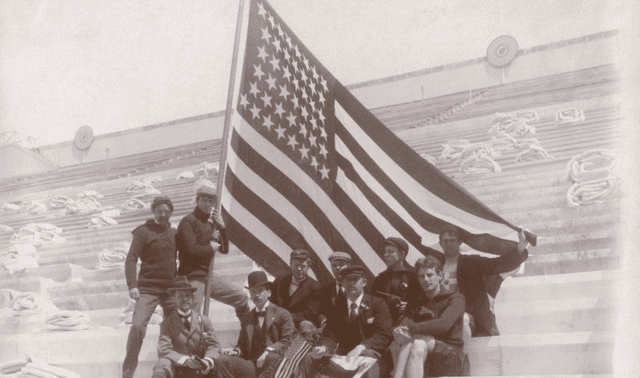The potato’s role in our ancestors’ history is a harvest of paradoxes, according to nutritional anthropologist Ellen Messer. Introduced in Europe from South America as an anti-famine crop, potatoes became a catalyst for famine when blight struck genetically narrow fields. In Ireland, the potato famine of the mid-1800s halved the population and sent many of our ancestors to American shores. Paradoxical, too, is the transformation of this simple, naturally nutritious food into a culprit in today’s obesity epidemic in the form of fries, chips and other starchy, salty indulgences.
First grown in the central Andes some 8,000 years ago, the paradoxical potato enabled the rise of successive empires. About 500 AD, the humble tuber fed the Huari civilization in present-day Peru and Tiwanaku in Bolivia, where agricultural innovations sustained a population that reached a half million. Potatoes, especially in a laboriously freeze-dried form called chuño that could last a decade, saw the succeeding Inca Empire through lean times. For Andean peoples, time itself was measured by how long it took to cook a potato.
The Spanish conquest destroyed the Incas’ empire but helped bring the potato to North America. The name that accompanied it was a mistake: either a misappropriation of batata, a native word for sweet potato, or an adaptation of the native term papa, which actually refers to a truffle. Potatoes reached Spain about 1570 and Britain a few years later. They returned to the New World in 1621 as a gift to the governor of Virginia, though the first permanent crop wasn’t planted for another century, likely near Derry, NH.
Initially, however, Europeans regarded potatoes with suspicion. People thought they were fit only for animals and caused “wind” and leprosy, or they feared them as poisonous because of their resemblance to nightshade plants. Others cited the lack of any mention of potatoes in the Bible, calling them “Devil’s apples.”
Among late 18th-century potato boosters were Louis XVI and Marie Antoinette, who wore the blossoms in their buttonholes and hair, respectively. In Prussia, Frederick the Great ordered his subjects to plant potatoes as a hedge against famine and set an example with a royal potato field heavily guarded against thieves (perhaps in an attempt at reverse psychology). Britain’s Board of Agriculture issued a pamphlet on potato growing, and the Times of London ran a series of pro-potato editorials and recipes.
As potatoes caught on, their nutritional benefits helped reduce mortality and increase populations; in England and Wales, the population doubled to almost 18 million from 1801 to 1851. Easy to cultivate in backyard plots—even in northern England’s coal country—potatoes fed the workers of the Industrial Revolution. Historian William H. McNeill has argued that the potato-fed population boom enabled yet another rise of empires: “It permitted a handful of European nations to assert dominion over most of the world between 1750 and 1950.”
Potato farming also set the pattern for modern agriculture. It employed the first widespread fertilizer, also imported from South America—Peruvian guano. And an attack of potato beetles inspired the first artificial pesticides made from arsenic.
Popular history says that potatoes came to Ireland with Sir Walter Raleigh, who planted them at his estate in Youghal, County Cork. Another version of the story says that potatoes washed up in Cork’s shores from a wreck of the Spanish Armada. By 1845, Ireland had 2.5 million acres planted with potatoes, and the average adult Irishman was eating 10 pounds a day. One cow and a one-acre backyard plot could feed a family, and many Irish ate little besides milk and potatoes.
Although the Irish population doubled between 1780 and 1841, its reliance on potatoes was a recipe for disaster. For the first 250 years of potato cultivation in Europe, all the varieties of the plant were derived from the initial post-Columbian introduction of the plants—in Ireland, primarily the bland but reliable Lumper potato. As Messer notes, this lack of genetic diversity “left almost all potatoes vulnerable to devastating viruses and fungal blights.”
A strain of potato blight fungus arose in the Americas and spread to northern Europe, possibly because of an ill-fated attempt to broaden disease resistance there. Between 1845 and 1849, blight literally decimated Ireland’s potato crop, cutting yields by 90 percent by 1846. A million Irish died and another million or more left their homeland. Even today, the combined population of the island of Ireland still has not recovered to pre-potato famine levels.
The other place most associated with potato growing, Idaho, actually did not plant its first crop until almost the same time blight struck Ireland. Missionaries such as Rev. Henry Spaulding planted potatoes as early as 1836, hoping to teach native tribes to settle down and practice agriculture. But the Whitman massacre led the Spauldings and others to flee in 1850, leaving their fields to wither.
Idaho’s first recorded planting where the crop is still grown today wasn’t until 1860 in the Cache Valley, three years before Idaho territory was organized. Early settlers took potatoes into eastern Idaho, where the crops thrived in river valleys with easily diverted water and rich volcanic-ash soil. By 1882, Idaho had 2,000 acres planted with potatoes, producing crops valued at $250,000—numbers that would grow to 33,000 acres and $3 million by 1915.
Contributing to Idaho’s potato boom was a new variety developed by Luther Burbank on a 17-acre Massachusetts farm. An effort to improve the disease resistance of potatoes like those in Ireland, it was Burbank’s first great success. He sold the rights to the new variety for $150, which he used in 1875 to travel to Santa Rosa, Calif., where he would create hundreds of new agricultural varieties. A type of his potato with rough, brownish (“russetted”) skin and dry, mealy flesh, christened the Russet Burbank, became the most widely cultivated variety in the United States and the most popular choice for French fries.
Today, the potato is the world’s fourth most important food crop, behind only wheat, rice and corn. But since the end of World War II, processed (and often, fried) potatoes such as frozen fries and chips have grown to three-quarters of the potato market—and Americans’ waistlines have grown as well.
Fun Facts
- The potato chip was created for railroad magnate Cornelius Vanderbilt after he sent back a plate of potatoes at a Saratoga Springs, NY, resort in 1853. The chef, George Crum, sliced the spuds thin, then fried and salted them, thinking to spite the Commodore—who loved the “crisps.”
- President Thomas Jefferson introduced French fries to America in 1802, asking the White House chef, Frenchman Honoré Julien, to prepare “potatoes served in the French manner” for a dinner party.
- Potatoes were the first vegetable grown in space, in a 1995 experiment by NASA and the University of Wisconsin.
Timeline
1526 | Pizarro reaches Inca territory
ca. 1570 | Potatoes arrive in Spain
1589 | Sir Walter Raleigh plants potatoes in Ireland
1719 | First potato patch is planted in North America.
1772 | France declares potatoes fit for human consumption
1774 | Frederick the Great orders Prussians to plant potatoes
ca. 1795 | French begin making fried potatoes (frites)
1861 | Jean-François Millet paints “Potato Planters”
1876 | Russet Burbank is introduced to US growers
1955 | Ray Kroc opens his first McDonald’s in Des Plaines, Ill.
ca. 1570 | Potatoes arrive in Spain
1589 | Sir Walter Raleigh plants potatoes in Ireland
1719 | First potato patch is planted in North America.
1772 | France declares potatoes fit for human consumption
1774 | Frederick the Great orders Prussians to plant potatoes
ca. 1795 | French begin making fried potatoes (frites)
1861 | Jean-François Millet paints “Potato Planters”
1876 | Russet Burbank is introduced to US growers
1955 | Ray Kroc opens his first McDonald’s in Des Plaines, Ill.
From the December 2015 Family Tree Magazine




